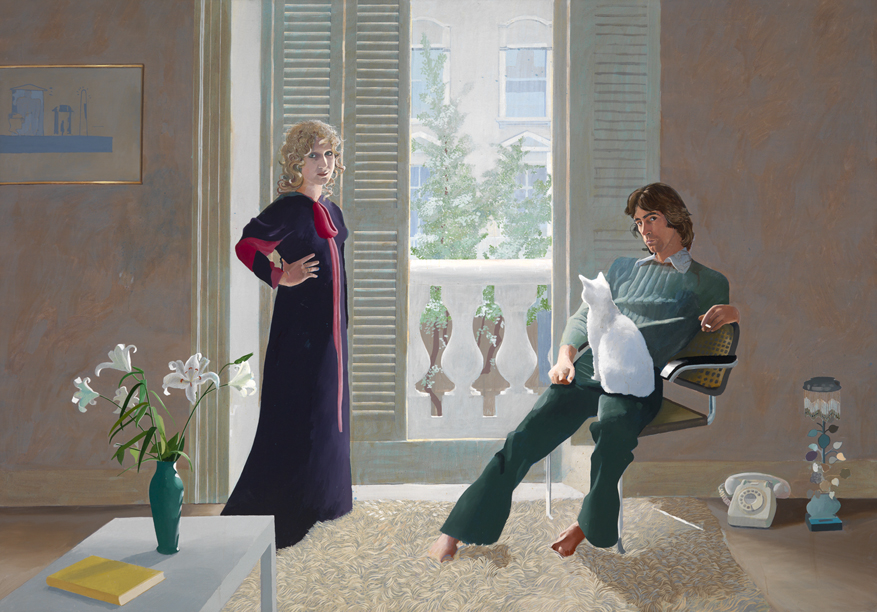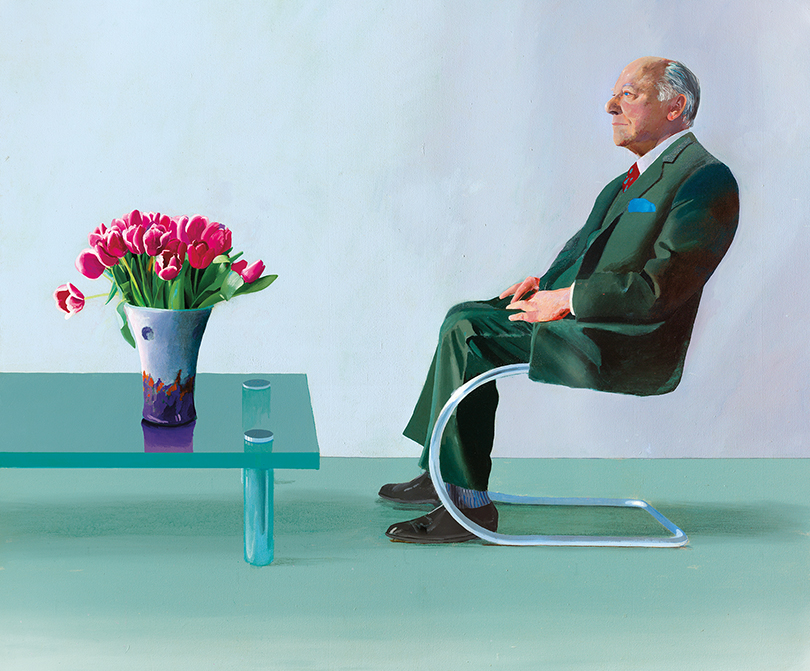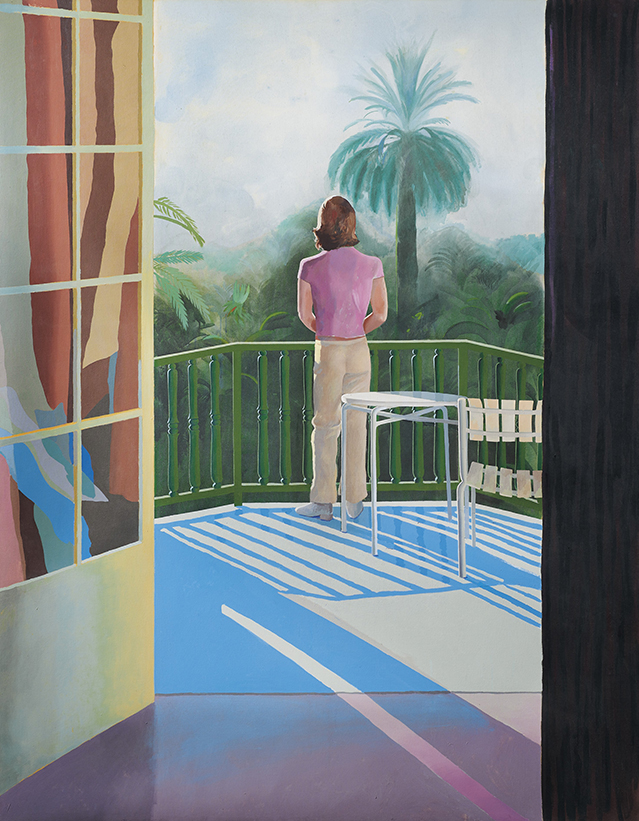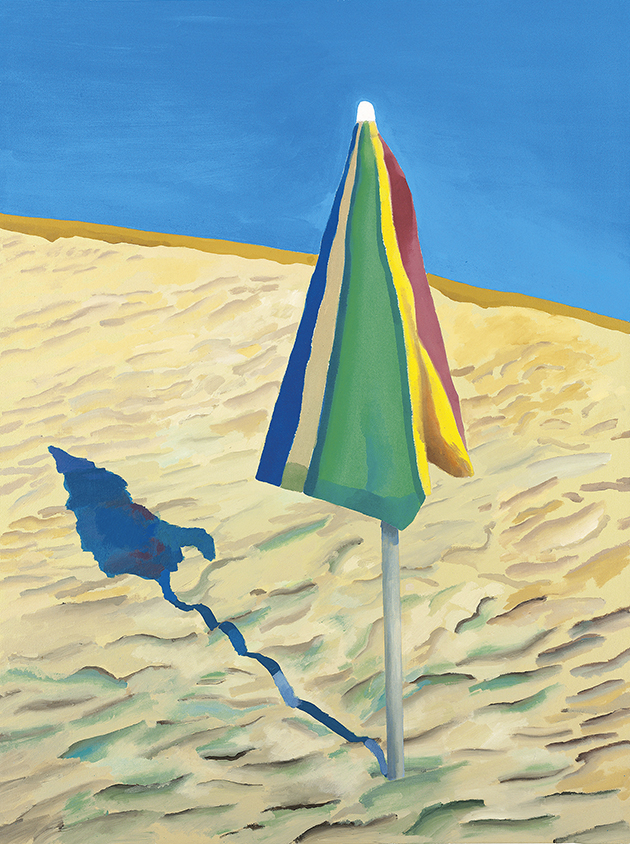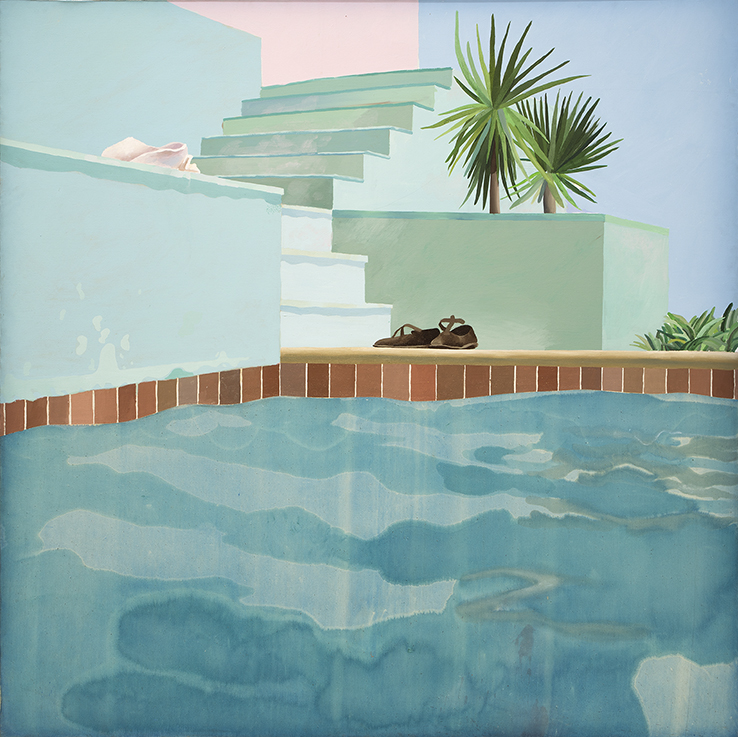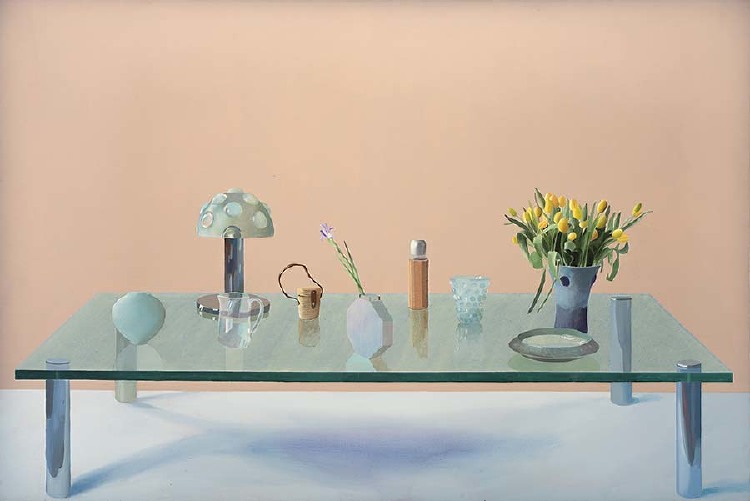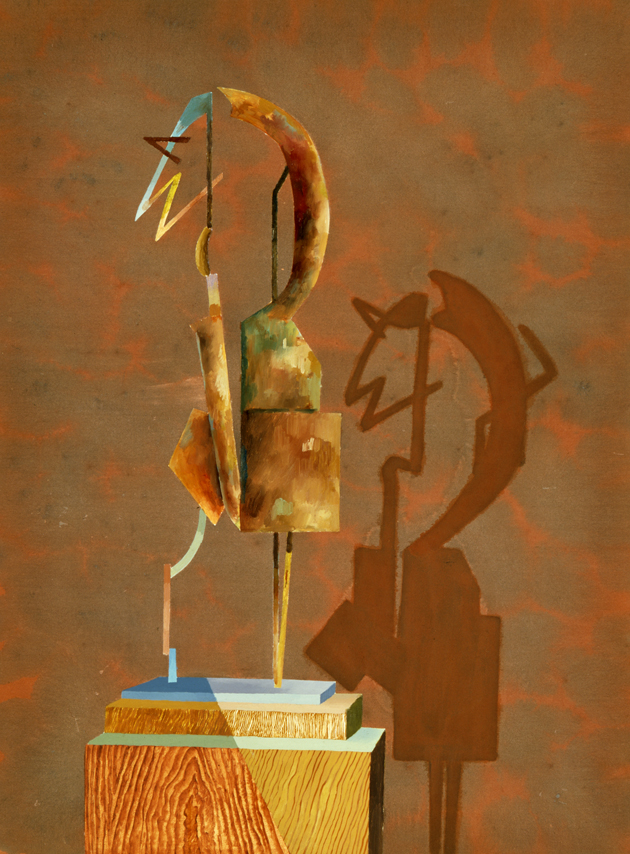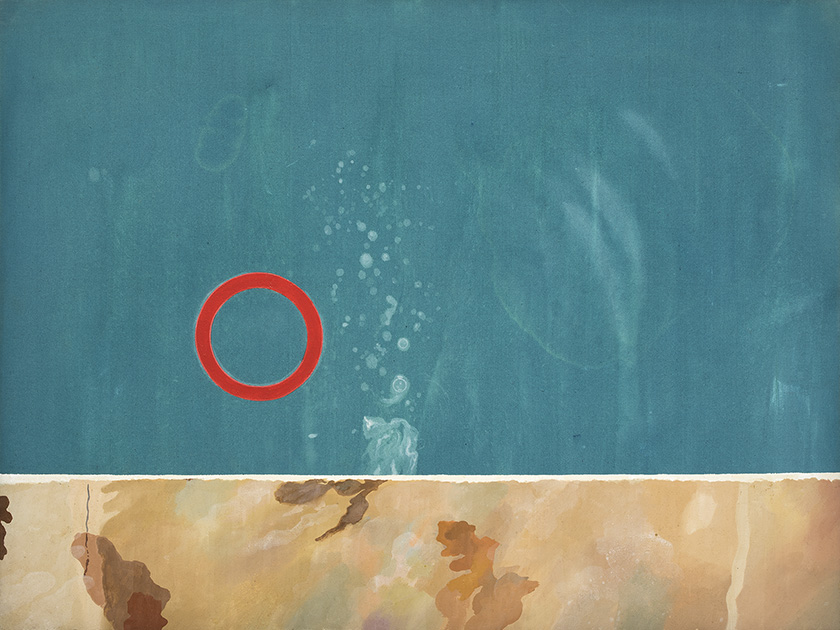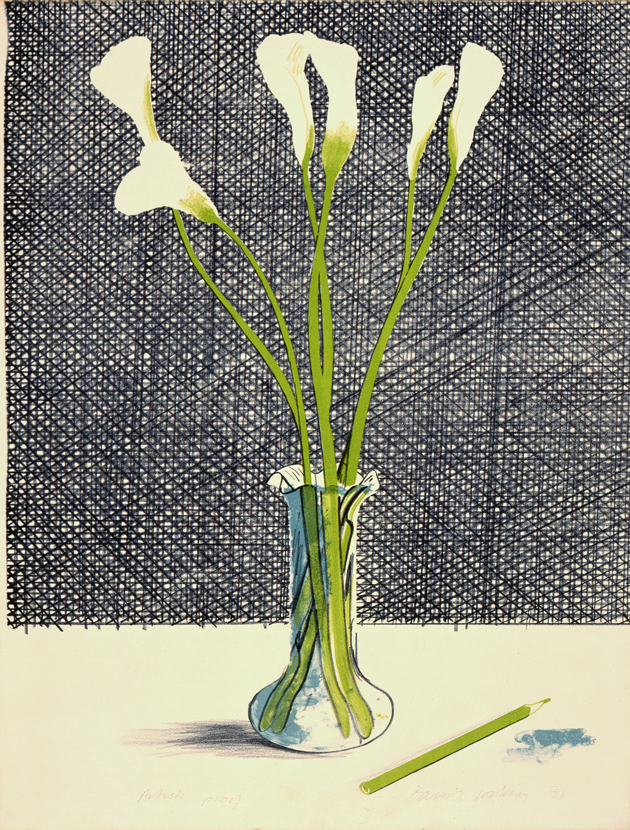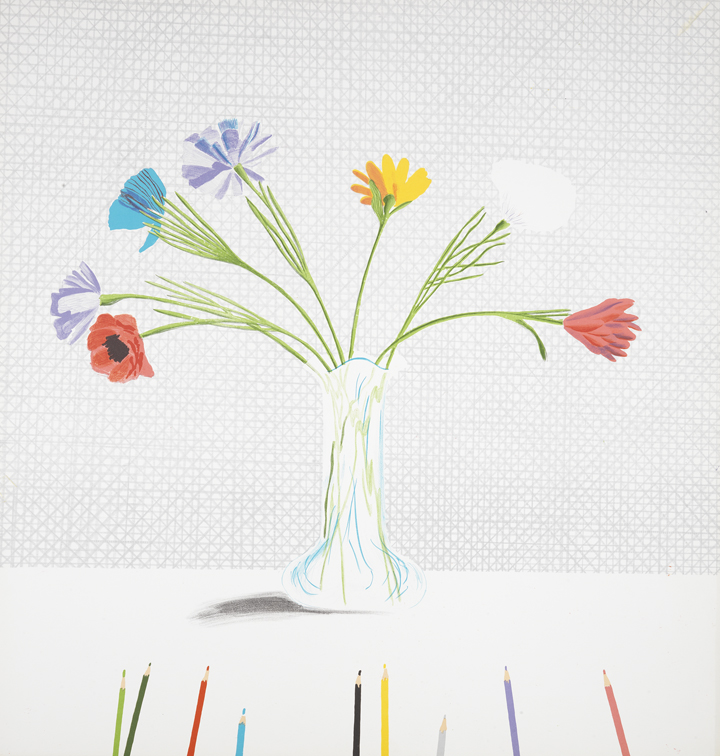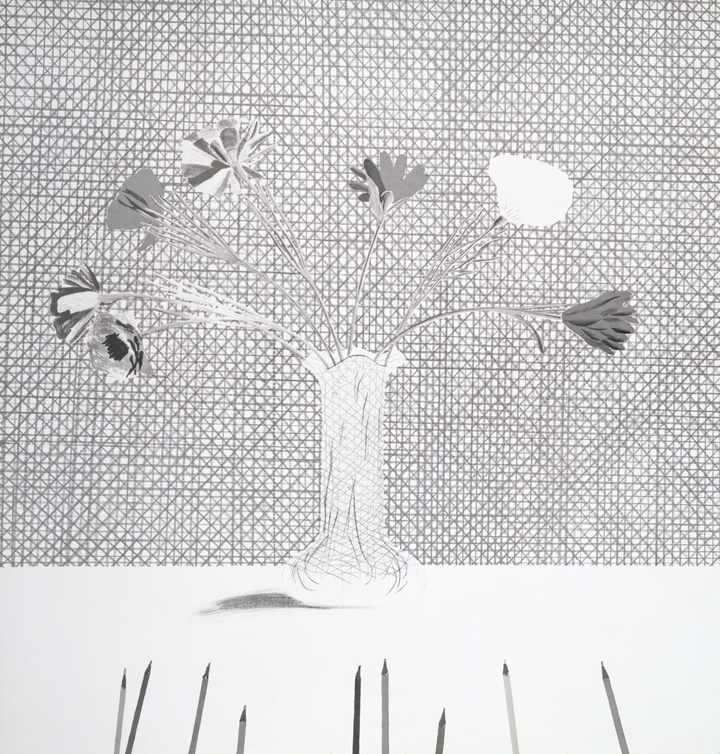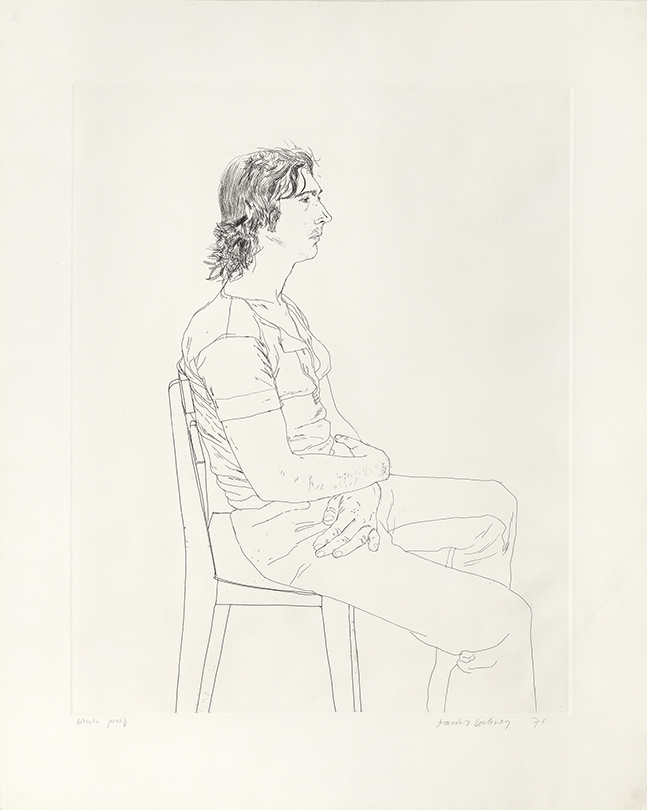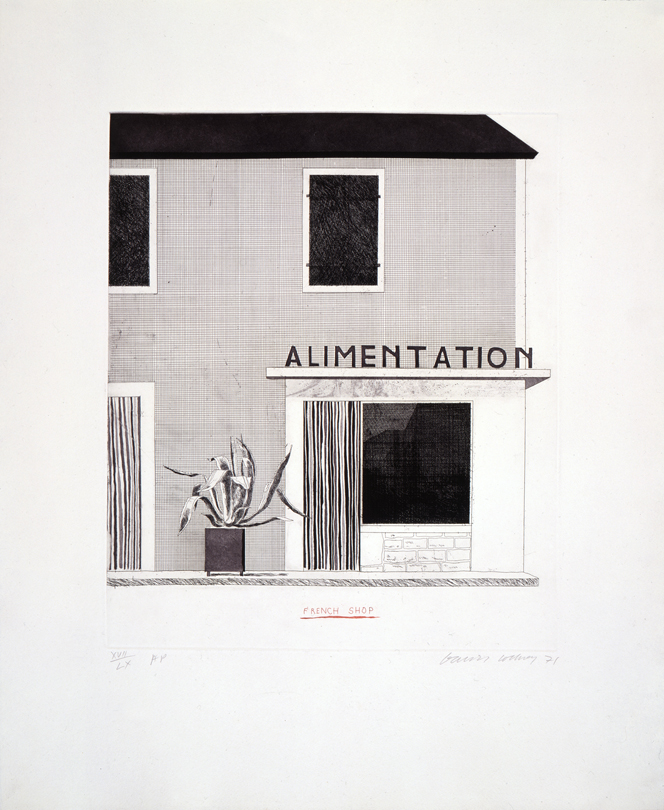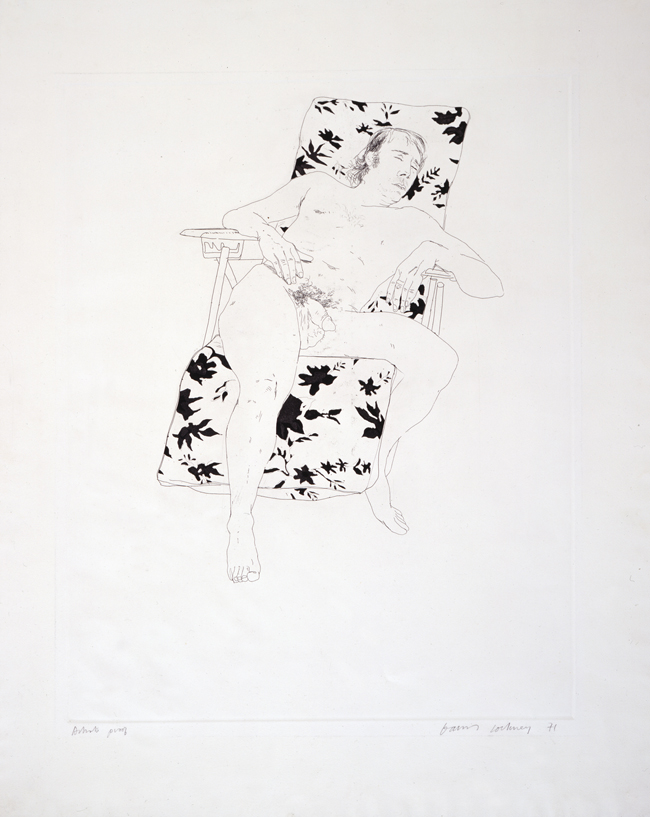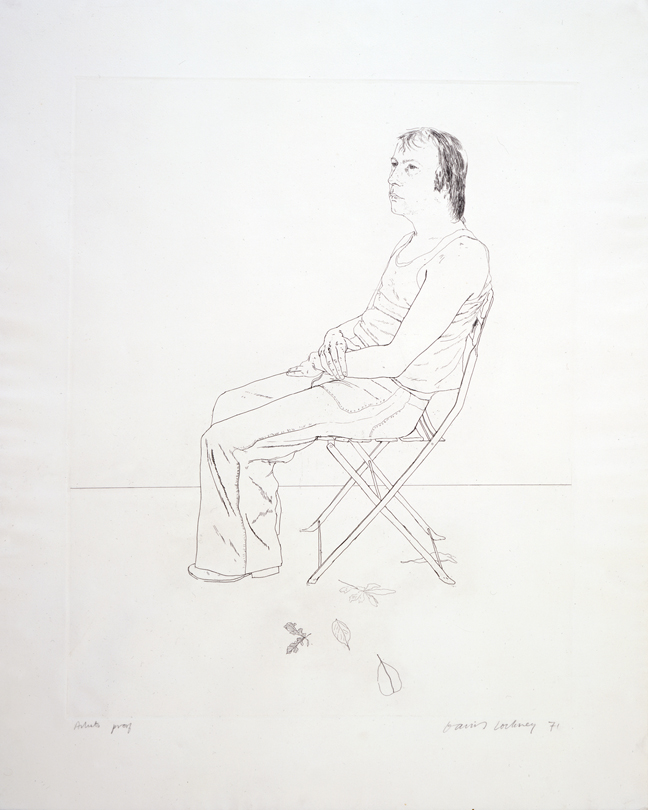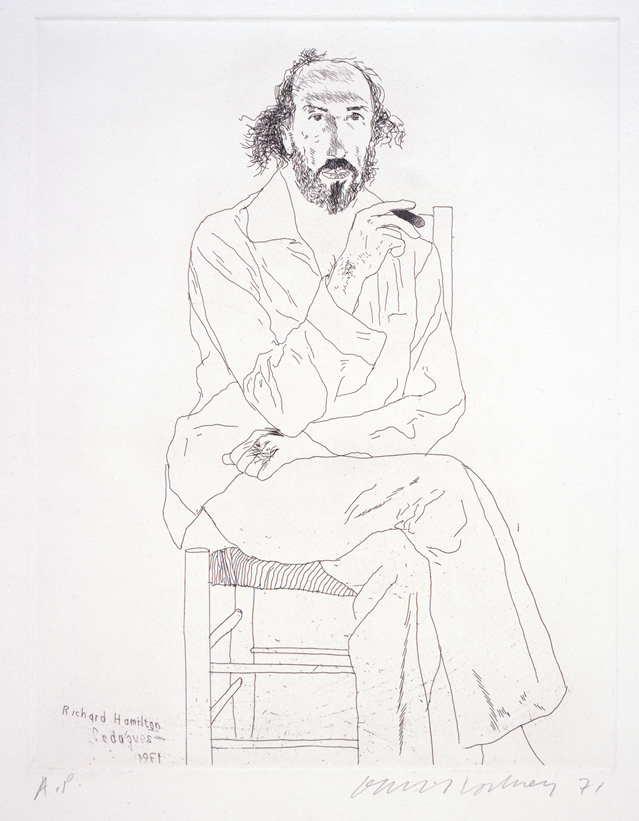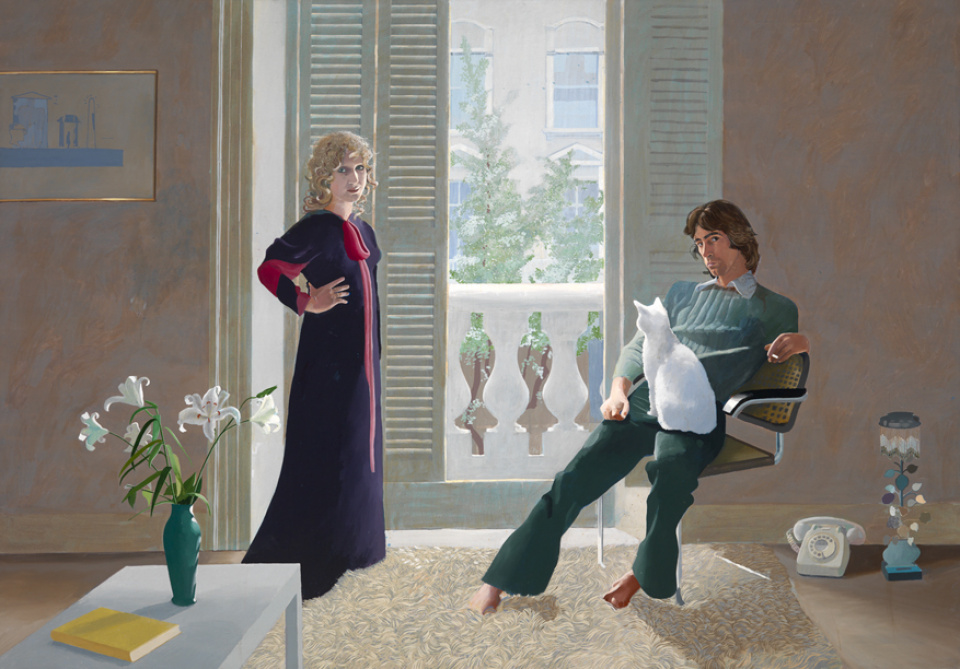
Mr. and Mrs. Clark and Percy
Hockney has taken roughly a year to finish a double-portrait of Ossie Clark and Celia Birtwell with their cat. Mr. and Mrs. Clark and Percy is as close as he gets to naturalism, in his own estimation. When the completed ten-by-seven foot work debuts at the National Portrait Gallery in London in March, Peter Quennell opines in the New York Times: “The picture is beautifully balanced; every detail is exactly spaced. David Hockney, we learn, painted one face no less than sixteen times, while a dozen separate re-paintings eventually fixed the view beyond the window.”
The figures are nearly life-size; it’s difficult painting figures like that, and it was quite a struggle. They posed for a long time, both Ossie and Celia. Ossie was painted many, many times; I took it out and put it in, out and in. I probably painted the head alone twelve times; drawn and painted and then completely removed, and then put in again, and again. You can see that the paint gets thicker and thicker there .... The one great technical problem in it is that the source of light is from the middle of the painting .... It’s easier if the source of light is from the side and you can’t see it, because if you can see it, it has to be the lightest thing in the painting, and it creates problems about tone .... To come to terms with tone, you have literally to be in front of something, and really look and see carefully what tonal values really are; you have to look and look. Well, this painting wasn’t painted like that. Although the figures were painted from life a great deal, they were posed in my studio because the painting is very big. What I wanted to achieve by such a big painting was the presence of two people in this room. All the technical problems were caused because my main aim was to paint the relationship of these two people.
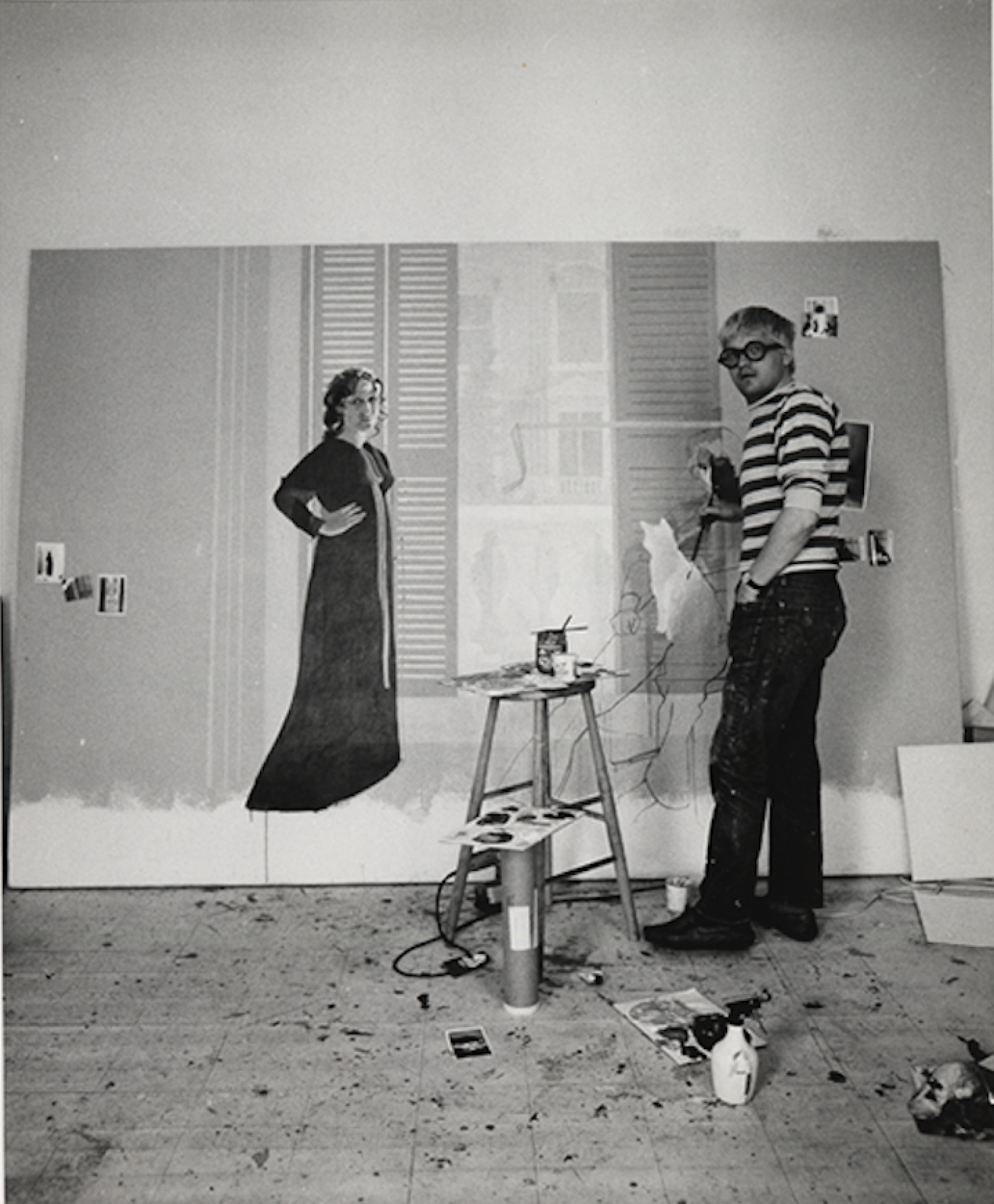
Sir David Webster
Hockney works with slow deliberation on a portrait commission—one of the few he will agree to in his lifetime—of the Royal Opera House’s director,[NESTED] Sir David Webster. He struggles with the task because of their lack of a personal relationship.
Even before I began the painting, I didn't know how to do it and what setting to do it in. I went to visit Webster many times ... but it took me a long time to find the subject .... Then they began to natter me, When will it be ready, he’s retiring on this date, and so on. And in the end I thought, all I can do is paint him in my studio. So that’s the setting; the table and chair and flowers in my studio.
Global travel
Over the course of the year, Hockney’s international jet-setting has him in Morocco, New York, Los Angeles, the Southwest of France, Hawaii, Japan, and Southeast Asia. He paints the remarkable Sur la Terrasse from an image taken in Marrakesh, of Peter Schlesinger observed from behind as he stands alone on a balcony at the hotel La Mamounia. Made during the period of their break up, Sur la Terrasse recalls Hockney’s L.A. images—that city’s light, strong shadows, and palm trees. Drawings of an altogether different feel result from going on holiday in the English Lake District with his parents.
Hard at work in the studio
In the deep grip of loneliness after Peter Schlesinger moves out of Powis Terrace, Hockney immerses himself in painting, working from morning till night. He is prolific. The canvases themselves often suggest absence, or his cerebral immersion in art history.
Gonzalez and Shadow
These shadows with their completely flattened forms seemed to contradict the idea of cubist sculpture. They amused me because somehow I’d accepted the intellectual and conceptual idea of cubist sculpture and thought the shadows should accept those ideas as well.


Rubber Ring Floating in a Swimming Pool
I was so struck by the photograph’s looking like a Max Ernst abstract painting, that I thought, it’s marvelous, I could just paint it.

Hockney on film
Filmmaker Jack Hazan begins documenting Hockney in his daily life—including the disintegration of his relationship with Schlesinger and subsequent intensity in the studio—and goes on to take three more years of footage for the feature A Bigger Splash (1974).
Exhibitions
Solo
- Zeichnungen, Grafik, Gemälde, Kunsthalle Bielefeld, Bielefeld, Germany (Apr 25–May 30); catalogue.
Group
- 100 British Contemporary Works of Art, Calouste Gulbenkian Foundation, Lisbon, Portugal (opens Jan 1971).
- Snap! An Exhibition Exploring the Ideas and Motives behind Portraiture, National Portrait Gallery, London, UK (Mar–Apr 1971); catalogue.
Publications
Publications
- David Hockney Zeichnungen, Grafik, Gemälde, Kunsthalle Bielefeld, Bielefeld, Germany.
